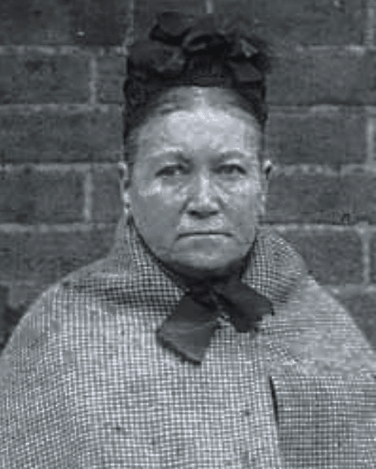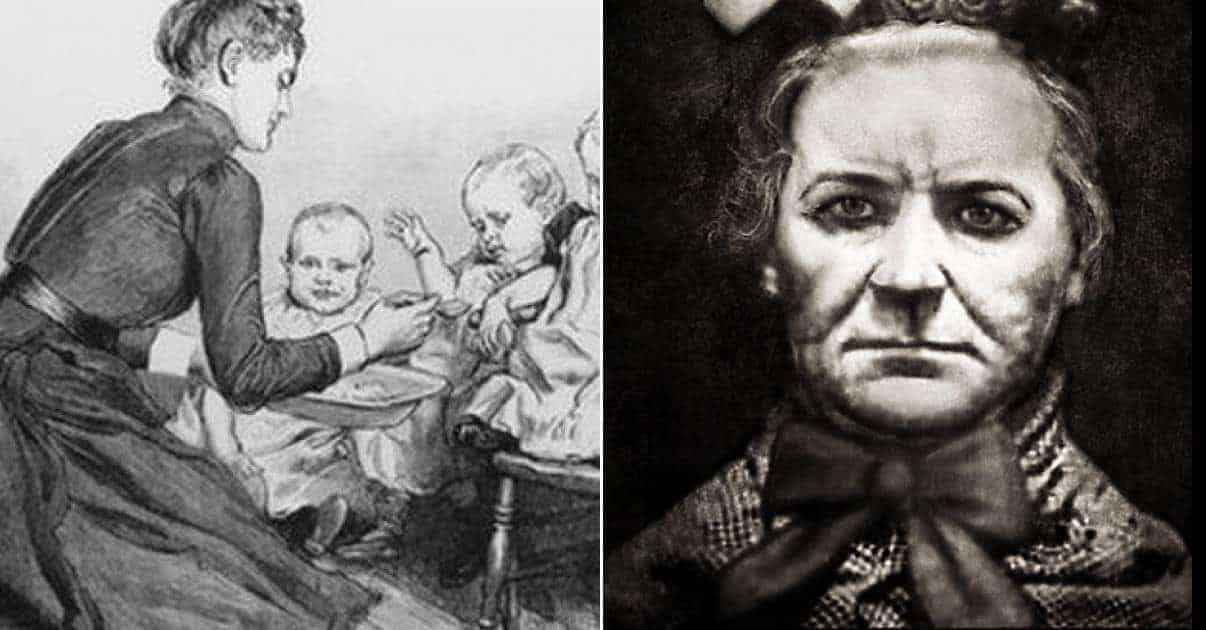A man preparing his garden in 1902 dug up skeletal remains. Shocked, he notified the local authorities. What the man had found were remains of five infants that had been murdered. Each child had been strangled with white tape, “wrapped in some kind of material,” sprinkled with lime to reduce the smell of decay, and then buried. As investigators tried to identify the dead children, they realized that the man now lived in the former residence of an infamous baby murderer. Amelia Elizabeth Dyer killed up to 400 babies over several decades as Britain’s most famous baby farmer.

Amelia Elizabeth Dyer was born in the small town of Pyle Marsh, England, near Bristol, in either 1837 or 1838. She became the youngest of seven children when her two younger sisters died. Her father was a popular shoemaker and most likely was able to provide a simple yet comfortable life for his family. Amelia’s mother suffered from mental illness. Family members reported that after she recovered from typhus fever, a bacterial infection spread by fleas, lice, and chiggers, she began to have violent outbursts that lasted days. Two years before her mother’s death, Amelia began as an apprentice with a corset maker in Bristol.
Somehow, Amelia became estranged from her family. When her father died in 1859, Amelia was about 22 years old and her oldest brother inherited the family business. Without any financial support from her family and no legal way to claim any of the business, Amelia married a man considerably older than her. George Thomas was 59 but lied about his age, stating that he was 45 and Amelia lied and stated that she was 30 instead of 24. During the marriage, Amelia had at least one child, a daughter, that remained close to her, even working with her later in life.
As a married woman, Amelia trained as a nurse and a midwife. During her studies, Amelia met a woman that introduced her to the world of baby farming. It was possible for midwives to make money off of the unfortunate circumstances of single women who were pregnant. For a brief time, Amelia operated her own boarding house for pregnant, unmarried women. After Amelia assisted the women with the delivery of their infants, they paid her to care for their newborns. Some women left the boarding house never caring what happened to their unwanted babies, while others wrote to Dyer, who rarely replied more than once, if ever.
As she maintained her career as nurse, midwife, and baby farmer, Amelia suffered from mental breakdowns and suicidal thoughts. There was suspicion that Dyer was faking her mental illness, as she seemed to suffer mental breakdowns when people became suspicious of the number of children that died in her care. Regardless, she did make one serious suicide attempt. She consumed two bottles of laudanum, a combination of morphine and codeine that tasted extremely bitter, but she was not successful. Years of extreme alcohol consumption and opium use had caused her to build up a tolerance.
Baby farming had been used in England for many centuries. For wealthy women, it was completely acceptable to send their infants to a wet nurse who would breast-feed and care for the infants until they reached toddlerhood. Poor or working class women that found themselves pregnant had very little opportunity to achieve any sort of financial stability if they were not married. In Victorian Era Britain, having a baby out of wedlock was akin to or worse than murder.

